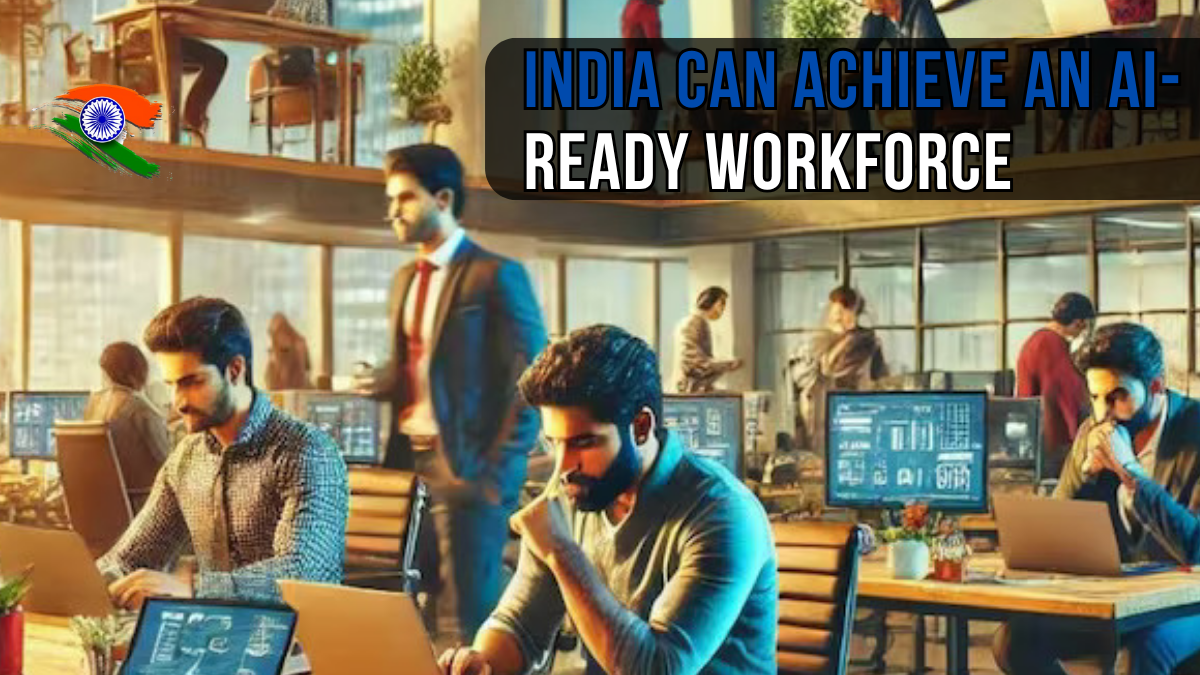Unlocking India’s AI Potential
With artificial intelligence (AI) progressing at an unprecedented rate, nations worldwide are adapting to leverage its transformative potential. For India, the stakes are uniquely high. Boasting one of the youngest and largest workforces in the world, the country is positioned to play a key role in the AI revolution. However, a recent report from Google.org and the Asian Development Bank reveals that India must act fast to develop an AI-ready workforce.

Understanding the Challenges
AI has the potential to contribute up to USD 3 trillion to the GDP of the Asia-Pacific region by 2030, and India is pivotal in achieving this. However, several roadblocks threaten to widen inequalities if left unaddressed.
1. Disruption of Traditional Jobs
AI-driven automation poses significant risks to administrative and repetitive roles such as data entry, customer service, and logistics. These roles, often performed by women, informal workers, or those with low digital literacy, are increasingly vulnerable as technology advances.
2. Misalignment Between Education and Market Needs
A glaring disconnect exists between the skill sets imparted by educational institutions and those required by employers. Critical thinking, adaptability, and proficiency with AI tools are now sought-after skills, yet many graduates struggle to meet these expectations.
3. Digital Access Barriers
Limited access to the internet and smartphones in rural areas prevents entire segments of the population from participating in AI skilling initiatives. Without drastic improvements in connectivity, the digital divide is likely to persist.
4. Gender Gaps in the Workforce
At 35%, women represent a significant portion of India’s workforce. However, they are disproportionately represented in roles at risk of automation, such as retail and office support. Many women also leave and re-enter the workforce due to family obligations, only to find their skills outdated in a rapidly changing job market.
Creating an AI-Ready Workforce
The report identifies five key strategies for tackling these challenges. Here’s how India can move toward an inclusive and AI-ready future.
1. Tailored Skilling Programs
One-size-fits-all skilling initiatives are rarely effective. Instead, programs should cater to the diverse needs of different groups, such as recent graduates, informal workers, and women rejoining the workforce. Flexible, context-driven training can ensure no one is left behind.
2. Focus on Practical Training
Abstract technical expertise is less relevant in today’s job market than real-world skills. Practical, hands-on AI training can directly enhance job-readiness, closing the gap between education and employment. For example, simulated environments and internship programs could help students and workers apply learned skills in real-life scenarios.
3. Expand Awareness Campaigns
Awareness is crucial to encourage participation in AI-skilling programs. With only 15% of workers across Asia-Pacific participating in AI skilling initiatives, India must prioritize campaigns that demonstrate the value of AI skills and how they translate into better career opportunities.
4. Support MSMEs (Micro, Small, and Medium Enterprises)
MSMEs make up over 90% of Indian businesses, employing millions of people. Unfortunately, these businesses often struggle to adopt AI due to limited resources. Providing incentives, funding, and access to affordable AI tools can encourage MSMEs to upskill their employees and improve productivity.
5. Address Gender and Digital Gaps
Efforts to ensure inclusivity must focus on improving access to affordable training programs for women and digitally disadvantaged groups. Multilingual, gender-sensitive, and culturally relevant training modules can make AI skilling accessible to more people.
The Role of Existing Initiatives
While India faces numerous challenges, some AI upskilling programs are already paving the way for progress. For instance, the “Grow with Google” initiative has trained over 60 million individuals in the Asia-Pacific region, including many in India. Similarly, the AI Opportunity Fund, launched in 2024, aims to train 500,000 workers through partnerships with NGOs and educational institutions.
These initiatives demonstrate that large-scale skill-building projects are possible but must be scaled and adapted to meet India’s unique challenges.
The Opportunity Ahead
AI is no longer just a futuristic concept; it’s reshaping industries and redefining how businesses function. For India, the next decade represents an opportunity to lead the AI revolution. By prioritizing intentional, inclusive action, the nation can ensure its massive workforce becomes a competitive advantage rather than a liability.
Takeaways for Stakeholders
- Policymakers should focus on creating frameworks that support inclusive skilling initiatives and incentivize businesses to integrate AI training.
- Educational Institutions must align curricula with evolving job market demands, incorporating AI tools and critical thinking into traditional programs.
- Private Sector Leaders have a role in both funding skilling efforts and offering practical AI training within organizations.
With the right strategies and investments, India can equip its workforce to thrive in the AI era. The future of work is already here, and the time to act is now.
FAQs: Frequently Asked Questions
Q1. What is an AI-ready workforce?
A. An AI-ready workforce comprises professionals equipped with the knowledge and skills to understand, work with, and leverage artificial intelligence technologies in their respective industries.
Q2. Why is it important for India to upskill its workforce in AI?
A. AI is transforming industries across the globe, increasing efficiency, and creating new opportunities. Upskilling India’s workforce in AI ensures the country remains competitive in the global economy and supports economic growth and innovation.
Q3. What skills are essential for an AI-driven economy?
A. Key skills include expertise in data science, machine learning, programming languages like Python, AI ethics, and critical thinking. Soft skills like adaptability and collaboration are also vital to thrive in an AI-driven work environment.
Q4. How can organizations contribute to building an AI-ready workforce?
A. Organizations can provide continuous learning opportunities, partner with educational institutions, and invest in employee training programs focused on AI tools, techniques, and applications.
Q5. What role does the government play in fostering an AI-ready workforce?
A. The government can facilitate this transformation by promoting AI education, offering subsidies for training programs, creating AI policies, and collaborating with private sectors to align resources and strategies to prepare the workforce.
Click HERE For More
